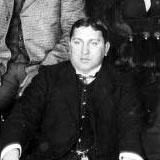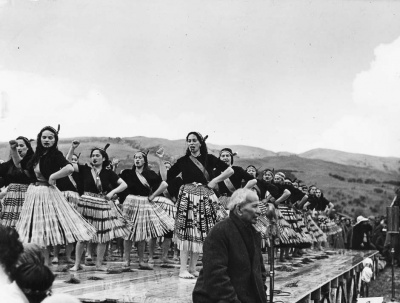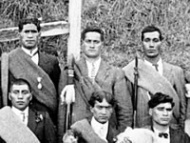Personal details
Full Name:
- Apirana Turupa Ngata
Lifetime:
- 3 Jul 1874–14 Jul 1950

Ngāti Porou leader and politician Apirana Ngata is one of New Zealand's best-known figures. Working through traditional tribal structures and as MP for Eastern Māori, he worked to strengthen Māori communities and revive Māori culture.
Read more...Events In History
-
 14 July 1950Death of Sir Apirana Ngata
14 July 1950Death of Sir Apirana NgataNgata had contributed hugely to the revival of the Māori people in the early 20th century. His intelligence, tact, persistence and political skill helped him promote Māori culture and identity. Read more...
Articles
Māori and the Second World War
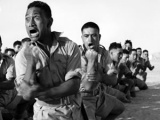
Despite some opposition, nearly 16,000 Māori enlisted for service during the Second World War. By 1945, 28 (Maori) Battalion had became one of New Zealand's most celebrated and decorated units. But Māori contributed to the war effort in many different ways, at home and overseas.
- Page 1 - Māori and the Second World WarDespite some opposition, nearly 16,000 Māori enlisted for service during the Second World War. By 1945, 28 (Maori) Battalion had became one of New Zealand's most celebrated and
Māori and the First World War
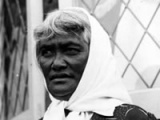
Māori reactions to serving in the First World War largely reflected iwi experiences of British actions in the 19th century.
- Page 2 - White man's war?Imperial policy initially doubted the wisdom of 'native' troops fighting a 'white man's
Waitangi Day
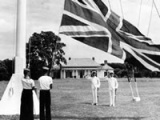
Every year on 6 February, New Zealand marks the signing of the Treaty of Waitangi in 1840. For most people, Waitangi Day is a holiday; for many, and especially for Māori, it is a time for reflecting on the Treaty and its place in modern New Zealand.
- Page 3 - Waitangi Day 1940s-1950sFrom the 1940s the Treaty and Waitangi began to find a place in the national consciousness. For most New Zealanders, they were of historical interest
Māori in the NZEF
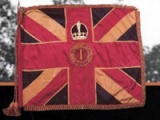
More than 2000 Maori served in the Māori Contingent and Pioneer Battalion during the First World War
-
Page 3 – Pioneer Battalion
In early 1916 the Maori Contingent ceased to exist and was replaced by the New Zealand Pioneer Battalion.
Treaty timeline
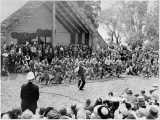
See some of the key events between 1800 and 1849 relating to the Treaty of Waitangi.
- Page 3 - Treaty events 1900-49Discover some of the key events between 1900 and 1949 relating to the Treaty of
The Treaty in practice
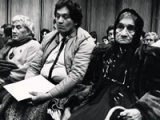
Amalgamating Māori into colonial settler society was a key part of British policy in New Zealand after 1840. Economic and social change, along with land-purchase programmes, were central to this process.
- Page 4 - Shared issues and approachesProspects for Māori looked bleak at the beginning of the 20th century. A shared sense of grievance emerged, and new leaders paved the way for new approaches to the
Scenery preservation 1903-1953
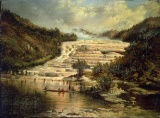
Premier Richard Seddon outlined his vision for 'God's own country' in 1903 as he steered the Scenery Preservation Act through Parliament. This act was an important landmark in preserving New Zealand's natural and historic heritage.
- Page 7 - Maori and scenic reservesInitially Māori had mixed feelings about the Scenery Preservation Act. The Member of Parliament for Northern Maori, Hōne Heke Ngāpua, welcomed it as a way to protect tōtara
Parliament's people
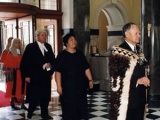
Today there are usually between 120 and 123 MPs in New Zealand's Parliament, which is a far cry from the 37 who met for the first time in Auckland in 1854.
- Page 3 - Māori MPsLeaders of Māori society have represented their people in the House, including Māui Pōmare, James Carroll, Matiu Rata and, most famously, Apirana
Parliament's culture and traditions
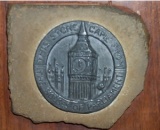
Explore Parliament's rich history and its colourful culture and traditions.
- Page 6 - Parliament in te reoTe reo (the Māori language) came into Parliament with the first Māori MPs, elected in
Related keywords
- maori contingent
- WW1
- napier
- landscape
- conservation
- maori land
- parliament
- Maori MPs
- maori language
- te reo māori
- ngati porou
- ngai tamanuhiri
- whakatohea
- henare balneavis
- maori in war
- victoria cross
- maori battalion
- ngarimu
- centennial
- waitangi day
- haka
- centennial exhibition
- treaty of waitangi
- kotahitanga
- education
- james carroll
- māori health
- race relations
- peter buck
- MPs
- national identity
- royal tours
- 1950s
- pioneer battalion
- gallipoli campaign
- alexander godley
- henare kohere
- anzac
- rua kenana
- wiremu pomare
- tahupotiki wiremu ratana
- timeline
- maui pomare
- matiu rata
- united party
- WW2
- te puea herangi
-
Women perform a waiata during the hui in Ruatoria to award the Victoria Cross to Te Moananui-a-Kiwa Ngārimu, October 1943.

